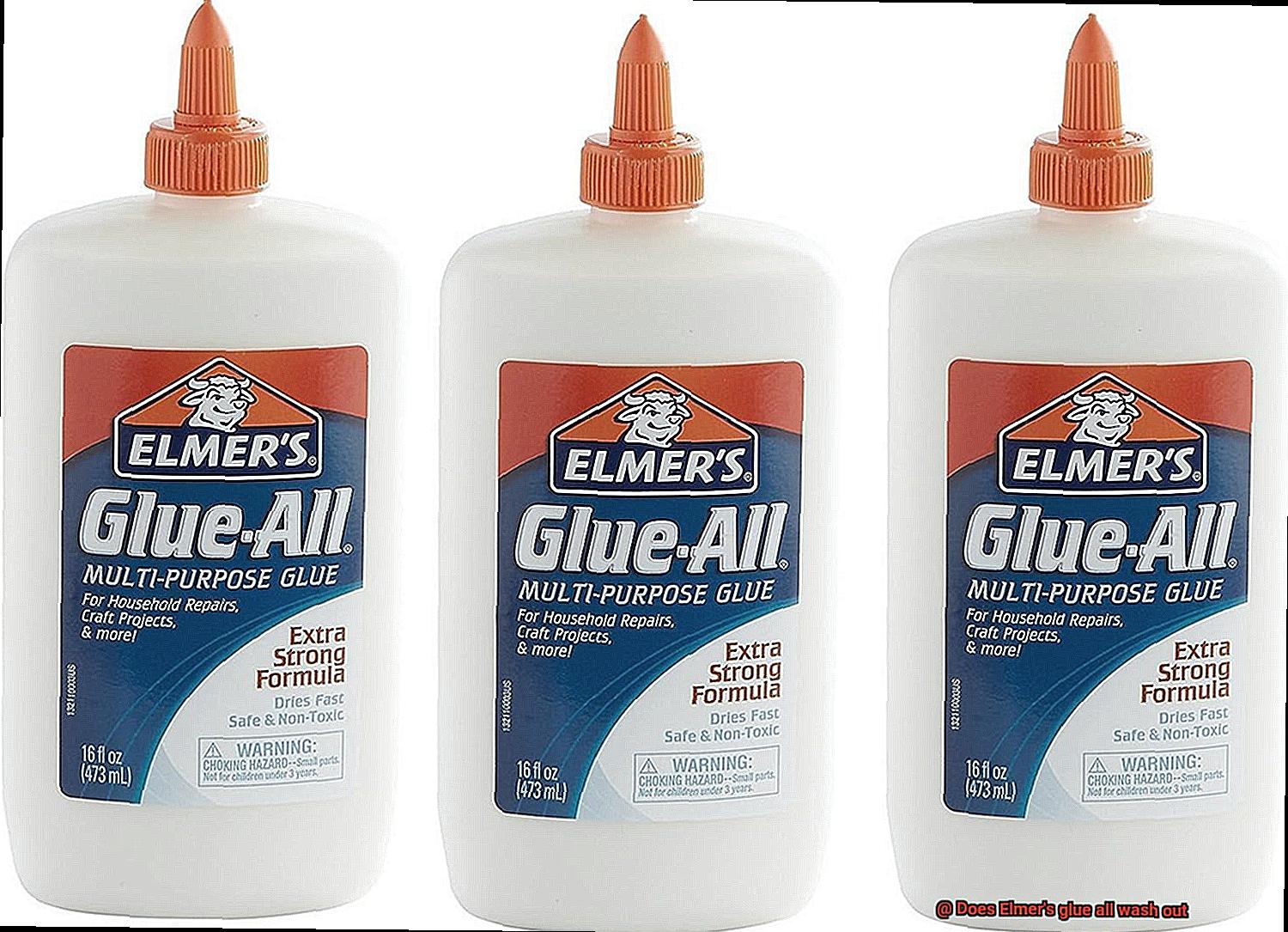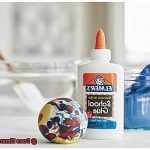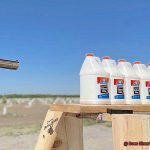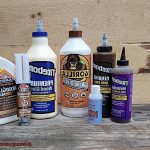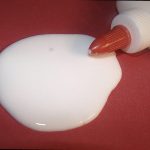Have you ever found yourself in a sticky situation where you needed to use glue on fabric or clothing, but weren’t sure if it would wash out? Fear not, because we’ve got the answer to the age-old question: Does Elmer’s glue all wash out?
Elmer’s glue is a popular choice for arts and crafts projects, as well as clothing repairs. But what happens when it comes time to wash your garment? Will the glue come off cleanly or leave behind an unsightly stain?
In this blog post, we’ll delve into the nitty-gritty details of Elmer’s glue and its washability. We’ll explore what exactly Elmer’s glue is made of and how it works. Then, we’ll break down the different types of Elmer’s glue available on the market and how they vary in terms of their ability to withstand washing.
But that’s not all – we’ll also share some insider tips and tricks on how to remove any leftover glue residue from your clothes or fabric if it doesn’t wash out easily.
So whether you’re a seasoned crafter or just looking for some quick fixes for your clothes, keep reading for a comprehensive breakdown of everything you need to know about Elmer’s glue and its washability.
What is Elmer’s Glue?
Contents
- 1 What is Elmer’s Glue?
- 2 Types of Elmer’s Glue
- 3 Does Elmer’s Glue Wash Out?
- 4 Factors Affecting the Washability of Elmer’s Glue
- 5 Washing Out Elmer’s Glue from Natural Fibers
- 6 Washing Out Elmer’s Glue from Synthetic Fabrics
- 7 The Best Method for Washing Out Elmer’s Glue
- 8 Tips for Removing Stubborn Stains and Residues
- 9 Conclusion
For over 70 years, Elmer’s Glue has been a trusted name in the world of adhesives. This versatile brand is popularly used in schools, households, and even professional settings. But what makes it so special?
At the heart of Elmer’s Glue is its main ingredient, polyvinyl acetate (PVA), a synthetic polymer that forms a strong bond when it dries. PVA is water-soluble, which means that Elmer’s Glue can be easily washed out with warm soapy water. Its washability makes it a top choice for parents and teachers alike.
Elmer’s Glue comes in various forms to suit your needs. The classic white school glue is perfect for school projects, art, and craftwork as it dries clear and can be easily washed out. Clear glue is ideal for projects where transparency is essential, such as glass or plastic bonding. It can also be used for making slime. Meanwhile, Glue-All Multi-Purpose Glue lives up to its name as it can be used for various purposes, including household repairs and art projects.
One of the most commonly asked questions about Elmer’s Glue is whether or not it all washes out. As mentioned earlier, the answer is yes, but it depends on several factors such as the type of surface it was applied to and the method of washing. However, what sets Elmer’s Glue apart from other adhesives is its non-toxic and safe composition, making it an excellent choice for children’s school assignments and art projects.
Types of Elmer’s Glue
Elmer’s glue is a trusted brand of adhesive that has been around for more than six decades. The company offers various types of glue that cater to different needs, making it easier for users to choose the right adhesive for their project. In this article, we will take a closer look at the five most common types of Elmer’s glue and their unique properties.
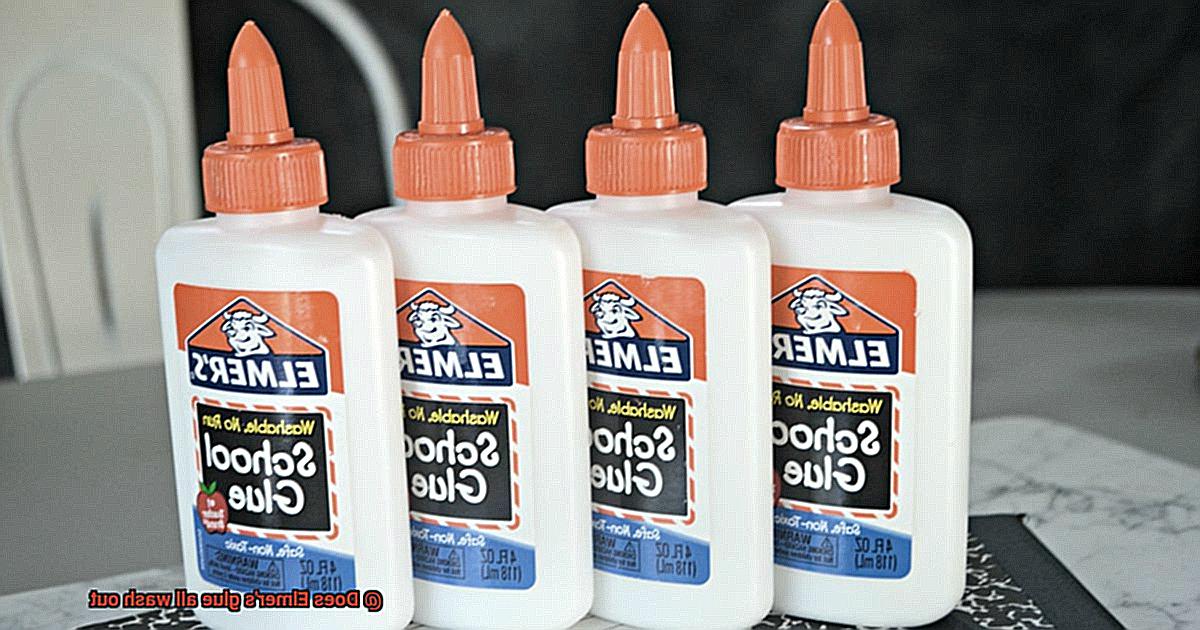
Elmer’s School Glue
Elmer’s School Glue, also known as white glue, is perfect for children’s art projects, schoolwork, and other lightweight applications. This type of glue is non-toxic and safe for kids to use. It dries clear and is water-soluble, which means it can be easily washed out from most surfaces. This feature makes it ideal for school projects that require glue clean-up.
Elmer’s Washable No-Run School Glue
Elmer’s Washable No-Run School Glue is another popular type of glue that is ideal for school projects and crafts. It dries clear and has a no-run formula that prevents messes. The best part is that it’s washable, making it easy to clean up if it spills or smears. This type of glue is perfect for young children who may struggle with keeping their projects neat.
Elmer’s Carpenter’s Wood Glue
For woodworking projects or bonding wood, particleboard, MDF, and other porous materials, Elmer’s Carpenter’s Wood Glue is the perfect choice. It dries clear and is waterproof, making it suitable for outdoor projects as well. This type of glue creates a strong bond that can withstand heavy-duty use, making it a favourite among carpenters and DIY enthusiasts.
Elmer’s Super Glue
Elmer’s Super Glue is a fast-drying adhesive that forms a strong bond on metal, plastic, ceramic, and other non-porous materials. Unlike other types of Elmer’s glue that are water-soluble, super glue dries quickly and forms a strong bond that can withstand heavy-duty use. This type of glue is perfect for projects that require a quick fix or a strong, permanent bond.
Elmer’s Rubber Cement
Elmer’s Rubber Cement is ideal for paper crafts and scrapbooking. It has a flexible hold that allows you to reposition your work as needed before it dries. This feature makes it easier to make adjustments to your project without ruining it. It’s also easy to clean up with a rubber cement pick-up or by rubbing it off with your fingers, making it a favourite among scrapbookers.
Does Elmer’s Glue Wash Out?
There are different types of Elmer’s glue, and many factors determine how easily it washes out of surfaces.
Firstly, standard white Elmer’s glue is water-soluble, making it easy to wash out with soap and water from most surfaces. However, if it has been left to dry for an extended period or exposed to heat, it may require more effort to remove.
In contrast, Elmer’s School Glue is also water-soluble but dries clear and can be effortlessly washed out of clothing and other fabrics. Additionally, it is non-toxic, making it safe for children to use.
The type of material on which the glue is applied also affects its washability. Porous surfaces like paper or cardboard absorb the glue, making it harder to remove. In contrast, non-porous surfaces like plastic or glass make it easier to wash out.
To summarize, Elmer’s glue can usually be washed out of most surfaces with soap and water. However, the ease of removal depends on several factors like the type of glue and material being used. It is always best to clean up any excess glue as soon as possible before it dries up and becomes more challenging to remove.
Factors Affecting the Washability of Elmer’s Glue
There are certain factors that can affect how easily it washes out of fabrics.
Firstly, the amount of glue applied is crucial. Using too much glue can result in a stubborn stain that won’t come out despite your best efforts. Always apply the glue sparingly and use just enough for your project.
The type of fabric is another factor to consider. Some fabrics absorb more readily than others, making it more difficult to remove the glue. Conversely, some fabrics repel the glue, making it easier to clean up. Knowing the type of fabric you’re working with is key to successful removal.
Temperature also plays a role in washability. Cold water may not be as effective at breaking down the glue, while hot water can cause it to set in place, making removal even more challenging. Always use warm water when washing out Elmer’s glue stains to help break down the adhesive.
Lastly, time is also a factor. The longer the glue sits on a fabric before washing, the harder it will be to remove. It’s always best to tackle the stain as soon as possible and avoid leaving it on for too long.
Washing Out Elmer’s Glue from Natural Fibers
When it comes to washing out Elmer’s glue from natural fibers, acting quickly is key. If the glue has already dried, it can be a real challenge to remove and may even cause damage to the fabric. But fear not. As an expert in this field, I’m here to share some effective methods for tackling this pesky problem.
Method 1: Warm Water and Mild Soap
This is one of the simplest and most effective ways to remove Elmer’s glue from natural fibers. Start by soaking a clean sponge or cloth in a mixture of warm water and mild soap. Then, gently dab the affected area, being careful not to rub too hard or scrub aggressively. Rinse thoroughly with cool water and repeat as necessary until the glue is completely removed.
Method 2: Vinegar or Rubbing Alcohol
If the first method doesn’t work, there are other options available. Vinegar and rubbing alcohol have both proven effective for removing Elmer’s glue from natural fibers. Simply apply a small amount of either substance to the affected area and let it sit for a few minutes before gently scrubbing with a soft-bristled brush or cloth. Rinse with cool water and repeat as necessary until the glue is gone.
A Word of Caution
While these methods may work for some natural fibers, they may not be suitable for all types of fabrics. Always test a small, inconspicuous area first before attempting to remove glue from a larger section of fabric. And if all else fails, seek professional help or take your garment to a dry cleaner. They have specialized equipment and knowledge needed to safely remove stubborn Elmer’s glue stains without causing damage to the fabric.
Washing Out Elmer’s Glue from Synthetic Fabrics
It can be a daunting task, but fear not, there are ways to remove that pesky stain and save your favorite clothes.
The key to successfully removing Elmer’s glue from synthetic fabrics is acting quickly. The longer the glue sits on the fabric, the harder it will be to remove. So, as soon as you notice the glue, grab a damp cloth or paper towel and blot up as much of it as possible.
Next, it’s time to treat the remaining stain. You have a couple of options here. You can use a commercial stain remover that is safe for synthetic fabrics, such as Shout or OxiClean, or opt for a more natural approach using white vinegar or rubbing alcohol. Apply your chosen solution to the affected area and let it sit for several minutes before washing.
When washing synthetic fabrics that have been stained with Elmer’s glue, it’s crucial to use cold water. Hot water can cause the glue to set in permanently, making it almost impossible to remove. Use a gentle cycle and avoid using fabric softener or bleach, which can make the stain worse.
If the stain persists after washing, don’t give up just yet. Instead of drying the fabric in a dryer, air dry it and repeat the stain removal process until the stain is gone. With patience and persistence, Elmer’s glue stains can be successfully removed from synthetic fabrics.
To prevent future mishaps, consider covering your synthetic fabrics with a protective layer when working with Elmer’s glue. And always remember that quick action is key when it comes to removing stains from synthetic fabrics.
The Best Method for Washing Out Elmer’s Glue
Elmer’s glue is a versatile adhesive that is commonly used for school projects, woodworking, and crafts. However, accidents happen, and if the glue spills or smears on clothes or surfaces, it can leave stubborn stains. Fortunately, removing Elmer’s glue stains is easy with the right method.
The best method for washing out Elmer’s glue depends on the surface or material stained. For instance, if you spill glue on clothes, act fast to prevent the glue from drying. Use a blunt object such as a spoon or butter knife to scrape off any excess glue. Then, soak the affected area in warm water for about 30 minutes to loosen the dried glue.
After soaking, gently rub the fabric together to remove any remaining glue. If the stain persists, create a paste using white vinegar and baking soda. Apply it to the affected area and let it sit for 5-10 minutes before rinsing off with water.
On hard surfaces such as floors or countertops, use a damp cloth to wipe off any excess glue before it dries up. Then, apply a mixture of warm water and dish soap to the affected area and let it sit for 5-10 minutes. Use a scrub brush or sponge to gently scrub off the glue.
To summarize:
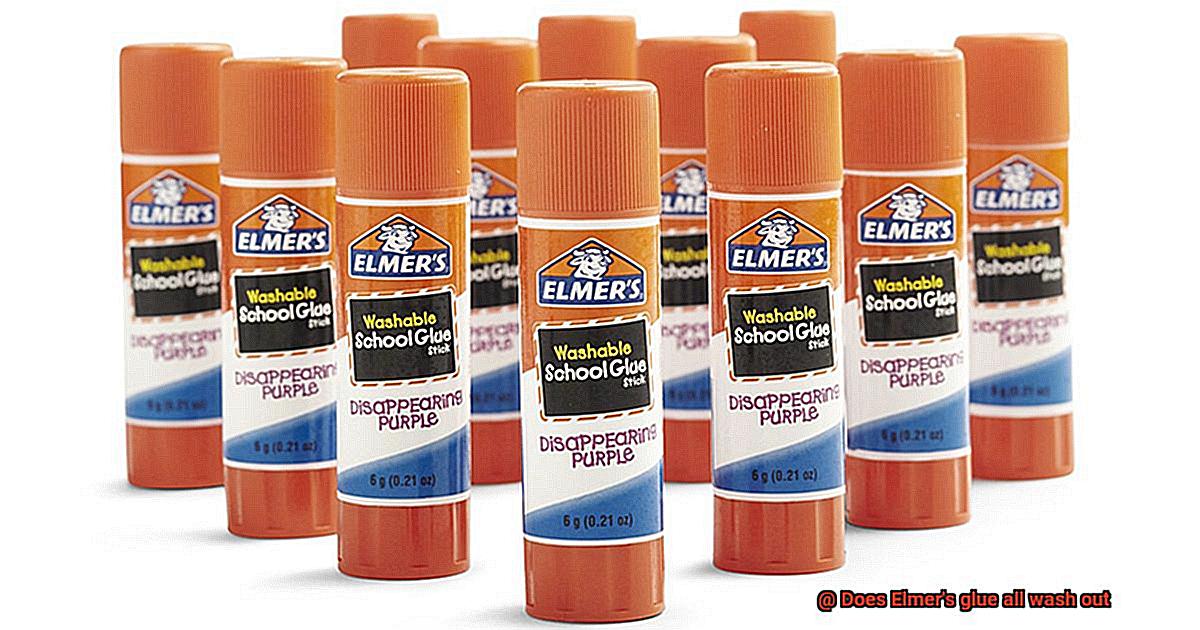
- Act fast to prevent the glue from drying
- Scrape off any excess glue
- Soak the affected area in warm water
- Gently rub the fabric together or use a scrub brush on hard surfaces
- Use a mixture of white vinegar and baking soda for stubborn stains
- Rinse off with water
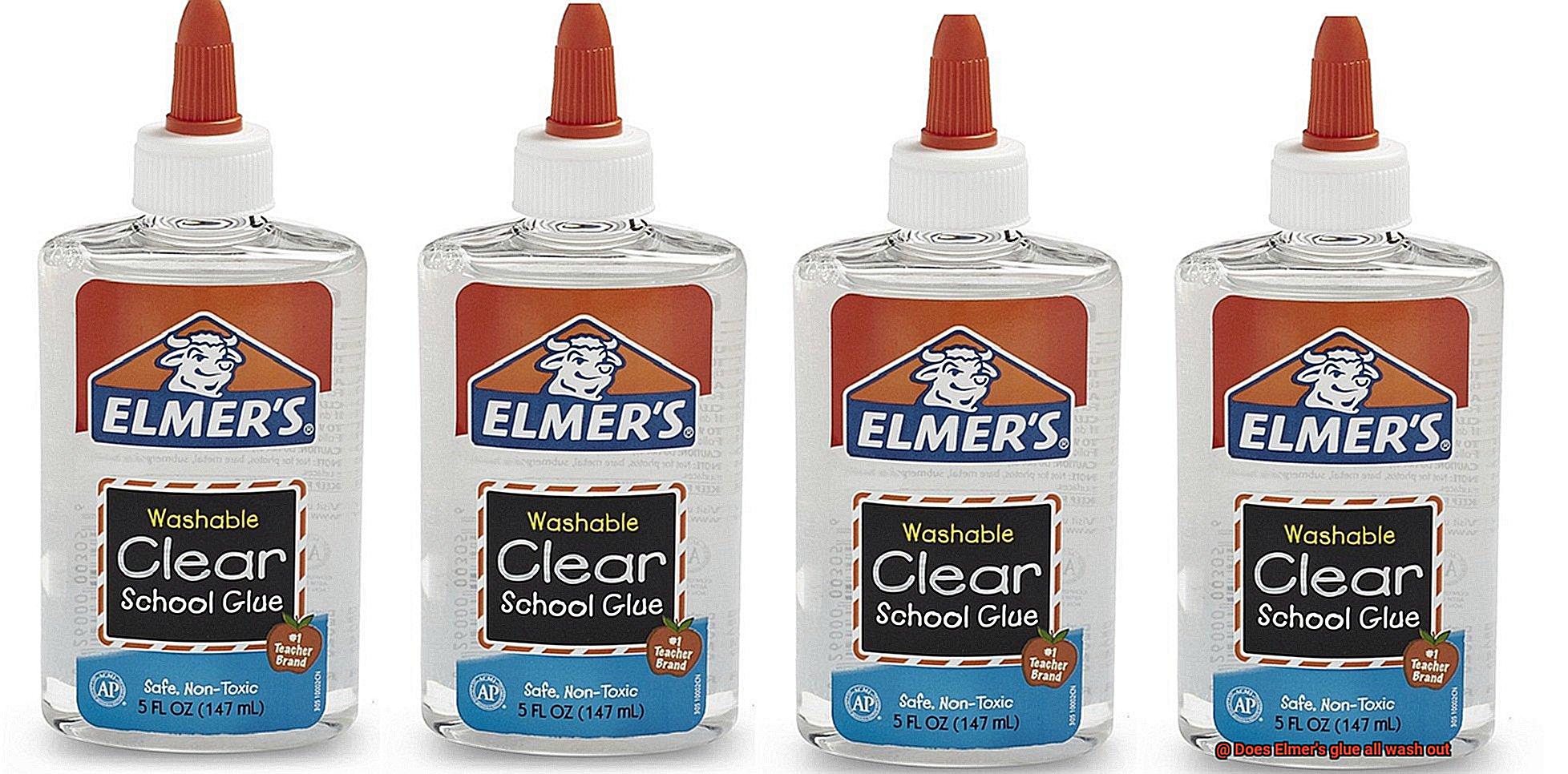
Tips for Removing Stubborn Stains and Residues
Fortunately, there are various tips and tricks that can help you tackle even the most challenging stains. In this article, we will explore five effective sub-sections that offer practical solutions for removing stubborn stains and residues caused by Elmer’s glue.
Warm Water and Dish Soap
The first tip is to use warm water and dish soap. Mix a small amount of dish soap with warm water and apply it to the affected area. Let it sit for a few minutes before gently scrubbing the area with a soft-bristled brush or cloth. This method is particularly effective for smaller stains or residues.
White Vinegar
In case warm water and dish soap don’t work, another option is to use white vinegar. Mix equal parts of white vinegar and water and apply the mixture to the affected area. Let it sit for a few minutes before wiping it away with a damp cloth. This solution can be used on various surfaces, including fabrics, carpets, and hard surfaces.
Rubbing Alcohol
For tougher stains and residues, rubbing alcohol can be an effective solution. Soak a cotton ball in rubbing alcohol and gently rub it onto the affected area. Rinse with warm water and repeat as necessary until the stain or residue is removed. This method is particularly useful for hard surfaces and plastics.
Baking Soda
Another option is to use baking soda and water. Mix a small amount of baking soda with water to form a paste, then apply the paste to the affected area. Let it sit for a few minutes before wiping it away with a damp cloth. This method is particularly effective for removing Elmer’s glue from fabrics.
Surface Consideration
It’s crucial to consider the type of surface that the glue is stuck to before attempting any removal methods. For delicate surfaces like fabrics or carpets, gentle methods are required. For hard surfaces like countertops or floors, a scraper or putty knife can be used to remove the glue. Heat can also be used to soften and remove Elmer’s glue. A hairdryer on a low setting can be used to warm up the glue before gently scraping it away with a plastic scraper.
Also Read: Is Elmer’s Glue Toxic?
Conclusion
In summary, Elmer’s glue is a jack-of-all-trades adhesive that can be utilized for a plethora of purposes, ranging from school projects to woodworking and crafts. Although it is renowned for its washability, the ease of removal is contingent on various factors such as the type of glue and material being used. The standard white Elmer’s glue is water-soluble and can be effortlessly washed out with soap and water from most surfaces.
However, if it has been left to dry for an extended period or exposed to heat, it may necessitate more elbow grease to remove.
Elmer’s Glue comes in multiple forms tailored to your needs. The classic white school glue dries clear and can be easily washed out, making it ideal for school projects, art, and craftwork. Clear glue is perfect for projects where transparency is paramount, while Glue-All Multi-Purpose Glue lives up to its name by being versatile enough to handle diverse tasks.
If you find yourself in a sticky situation where Elmer’s glue has spilled or smudged on clothes or surfaces, swift action is crucial to prevent the glue from drying. Use a blunt object like a spoon or butter knife to scrape off any excess glue before soaking the affected area in warm water. Additionally, there are tips and tricks at your disposal that you can use to tackle even the most stubborn stains and residues caused by Elmer’s glue.
All things considered, Elmer’s Glue is an adhesive you can depend on for its reliability, versatility, and washability.

